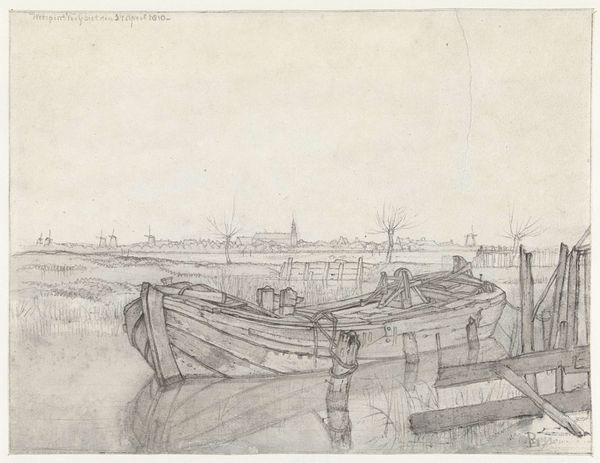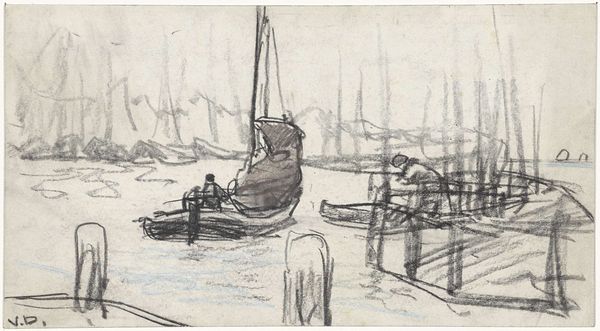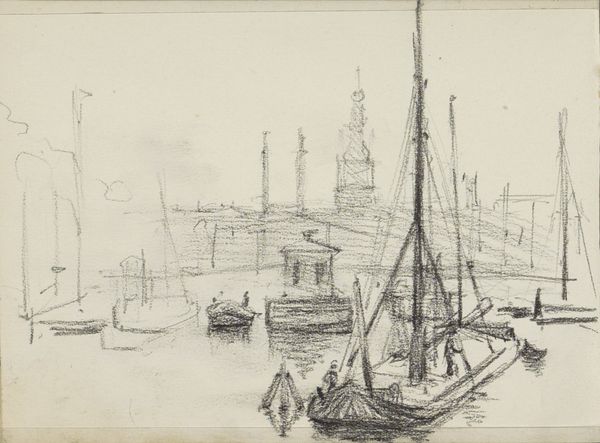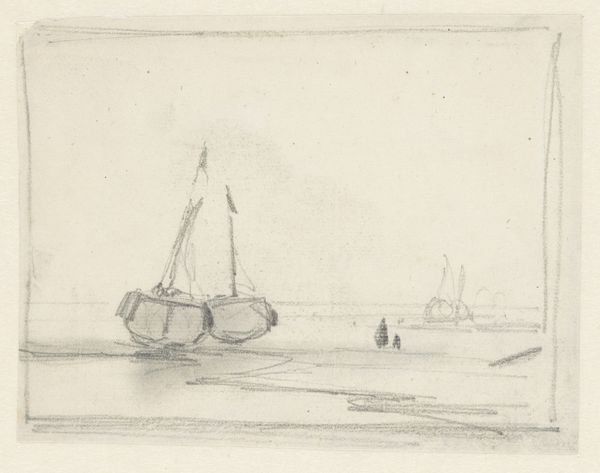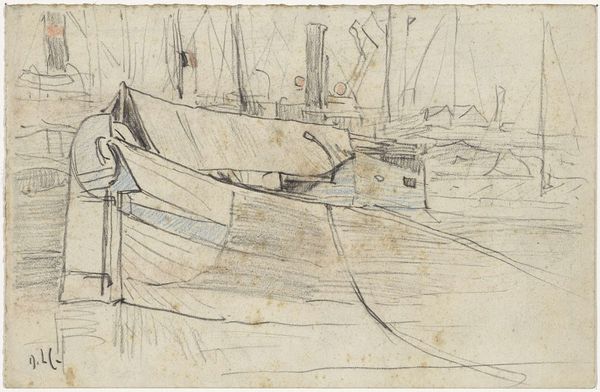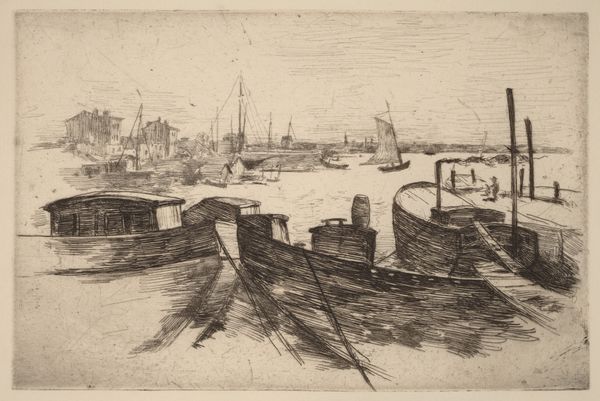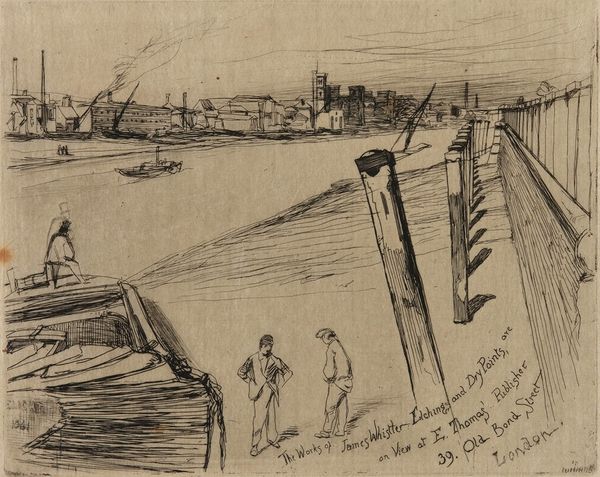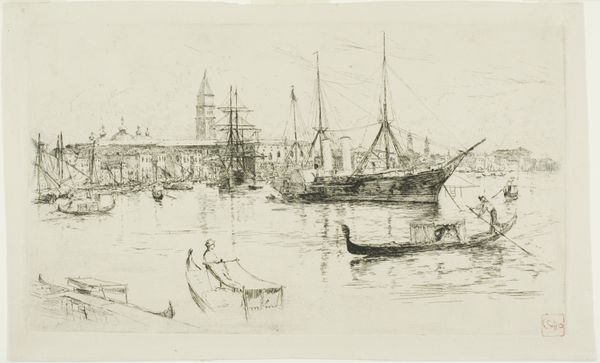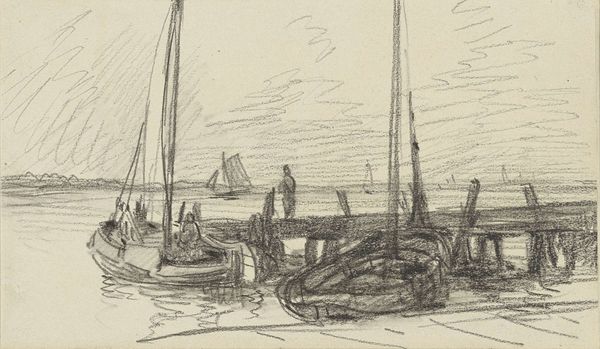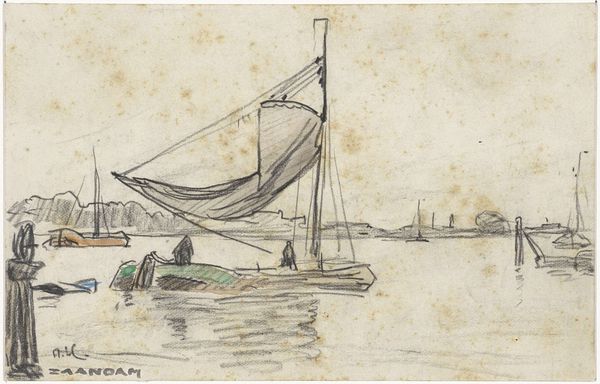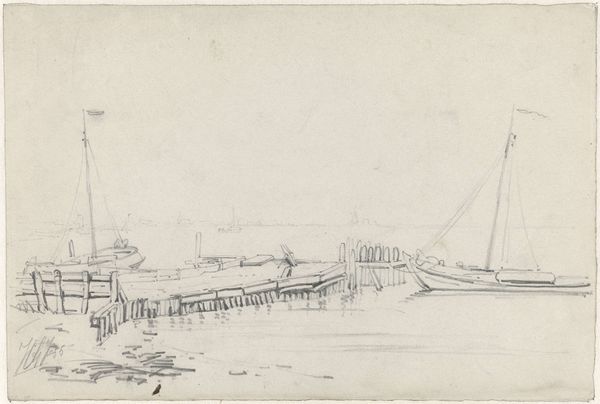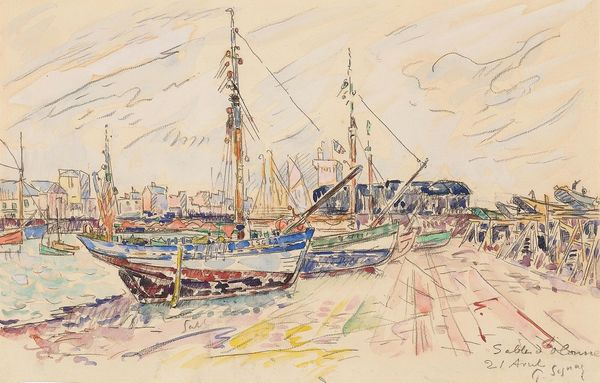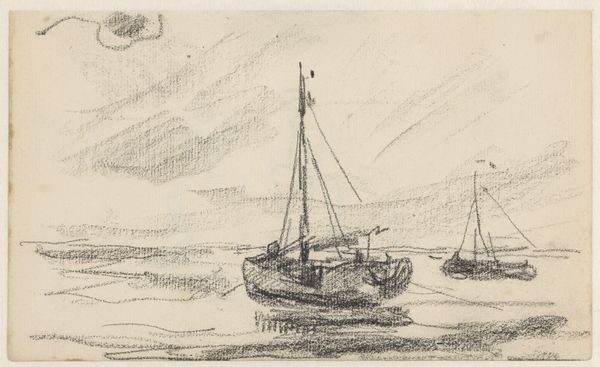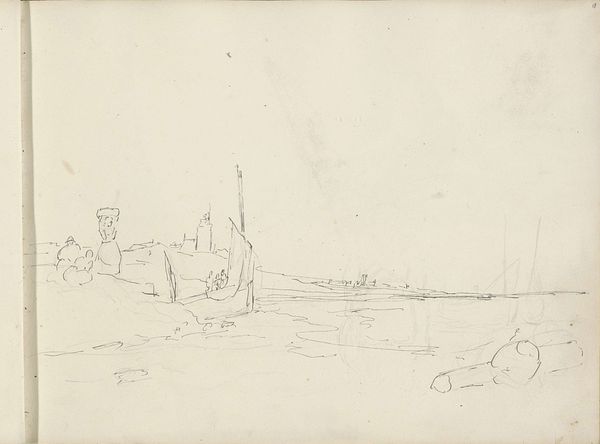
drawing, pencil
#
drawing
#
dutch-golden-age
#
landscape
#
pencil
#
cityscape
#
realism
Dimensions: height 115 mm, width 177 mm
Copyright: Rijks Museum: Open Domain
Curator: Looking at this sketch, the air feels heavy and still. It's mostly greyscale, but the little touch of blue, especially over the city, lends a melancholic and pensive atmosphere. Editor: That's a fascinating reaction. We're examining "River View with a View of Dordrecht," a pencil drawing by Adolf le Comte. Dating somewhere between 1860 and 1921, it encapsulates a cityscape heavily reliant on its connection to water. Curator: The water is everything, right? It’s trade, travel, the lifeline of Dordrecht. But it also mirrors the sky, doubling that greyscale. Visually, it’s a society, suspended and supported by its waterways but not disconnected from larger forces and historical flows. Editor: Absolutely. Drawings like this were crucial for disseminating images of cities, reinforcing civic pride and a sense of place. Le Comte, positioned in a tradition of topographical art, captures not just the visual likeness of Dordrecht but also its economic and social position. Note the prominence of ships - silent but also busy with cargo and commerce. How the politics of transport is shaping lives, and incomes. Curator: It makes me think about labor—all the unseen hands involved in maintaining that commerce. Those boats aren’t just floating, you know? I see labor relations—between humans, between them and water. Where's the tension there? Is it class-related? And who is framed as part of that dominant perspective. Editor: That is an important angle of reflection: it highlights the power dynamics inherent in landscape representation, revealing who benefits from this vision of civic prosperity and stability. The question is also whether the art, and its location on public display, reinforces these conditions, making them feel fixed. Curator: The interplay between a static city skyline and those actively moving boats introduces a captivating tension that pushes us to re-imagine relationships. The historical, classist underpinnings also are a great avenue for inquiry that encourages more discourse with theory in our understanding. Editor: This has made me appreciate Le Comte's ability to synthesize so much history and movement with what looks like such a simple, swiftly-executed sketch.
Comments
No comments
Be the first to comment and join the conversation on the ultimate creative platform.
